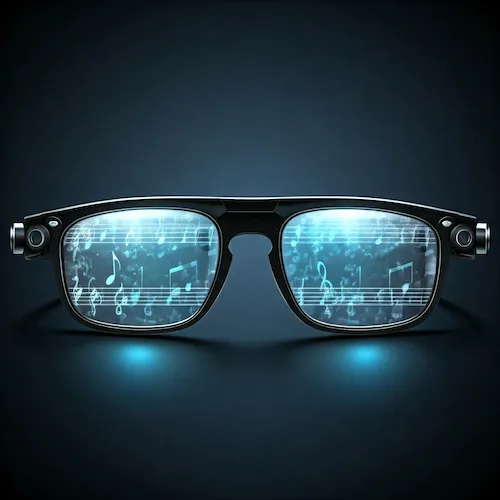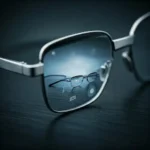Music on Smart Glasses
Smart glasses have evolved beyond augmented reality applications, now offering a discreet and convenient way to listen to music on smart glasses. By seamlessly integrating audio playback features, these innovative devices allow users to immerse themselves in their favorite tunes while remaining aware of their surroundings. Whether through built-in music players, Bluetooth connectivity, or voice control, smart glasses provide a unique and stylish alternative to traditional headphones, enhancing the listening experience with a touch of futuristic flair. Learn more about how to listen to music on smart glasses.
There are a few ways to listen to music on smart glasses:
- Built-in Music Player: Some smart glasses have a built-in music player that allows you to store and play music files directly on the device.
- Bluetooth Connection: Most smart glasses can connect to your smartphone via Bluetooth. This allows you to stream music from your phone’s music library or a streaming service app. Be sure you have a good Bluetooth connection between your phone and your smart glasses (How to Connect Smart Glasses to Phone?)
- Voice Control: Some smart glasses with voice assistants can control music playback on your connected smartphone.
Specific instructions will vary depending on the model of smart glasses you have.
Here are some general steps to listen to music on smart glasses:
- Check your smart glasses’ manual: The manual will provide specific instructions for your device.
- Connect to Bluetooth: If using Bluetooth, make sure your smart glasses are paired with your smartphone.
- Open a music app: Open your preferred music app on your smartphone.
- Control playback: Use the touch controls on your smart glasses or voice commands to play, pause, skip tracks, and adjust volume.
Popular smart glasses models:
- Ray-Ban Stories: These glasses connect to your smartphone via Bluetooth and allow you to control music playback using touch controls or voice commands.
- Facebook Smart Glasses: These glasses also connect to your smartphone via Bluetooth and offer similar music playback controls.
Frequently Asked Questions – How to Listen to Music on Smart Glasses:
Q: How can I listen to music on smart glasses?
A: There are a few ways to enjoy music with your smart glasses:
- Built-in Music Player: Some models have storage for music files, allowing you to play them directly.
- Bluetooth Connection: Most smart glasses connect to your smartphone via Bluetooth. This lets you stream music from your phone’s library or a streaming service app.
- Voice Control: Many smart glasses with voice assistants can control music playback on your connected phone.
Q: What music file formats are supported?
A: If using the built-in player, check your smart glasses’ manual for supported formats (e.g., MP3, AAC).
Q: How do I control music playback?
A:
- Touch Controls: Some glasses have touch-sensitive areas for play/pause, volume, and track skipping.
- Voice Commands: Use voice commands like “Play next song” or “Increase volume” if your glasses support them.
- Smartphone App: Many accompanying smartphone apps provide more extensive music controls.
Q: Can I adjust the audio quality?
A: Some models may offer basic audio settings, but the primary audio quality will depend on the source (your phone’s music files or the streaming service).
Q: How long does the battery last for music playback?
A: Battery life varies significantly between models. Refer to your specific smart glasses’ specifications for estimated music playback time.
Q: Are there any privacy concerns?
A:
- Audio Recording: Be mindful of potential audio recording features in some smart glasses. Ensure you understand how these features work and your privacy settings.
- Data Usage: Streaming music will use data from your phone’s data plan.
Q: Can I use noise-canceling headphones with my smart glasses?
A: Generally, you can use noise-canceling headphones with smart glasses. However, the audio quality may vary depending on the specific model and how the headphones interact with the glasses’ audio output.
Disclaimer: This information is for general guidance only. Always refer to your specific smart glasses’ user manual and manufacturer support for the most accurate and up-to-date information.
Additional helpful information:
If you are having problems pairing your smart glasses to your phone, read this – Smart Glasses Not Pairing – How to fix it?
Be sure your smart glasses have a full charge – Smart Glasses Charging Problems – Suggestions and Solutions




